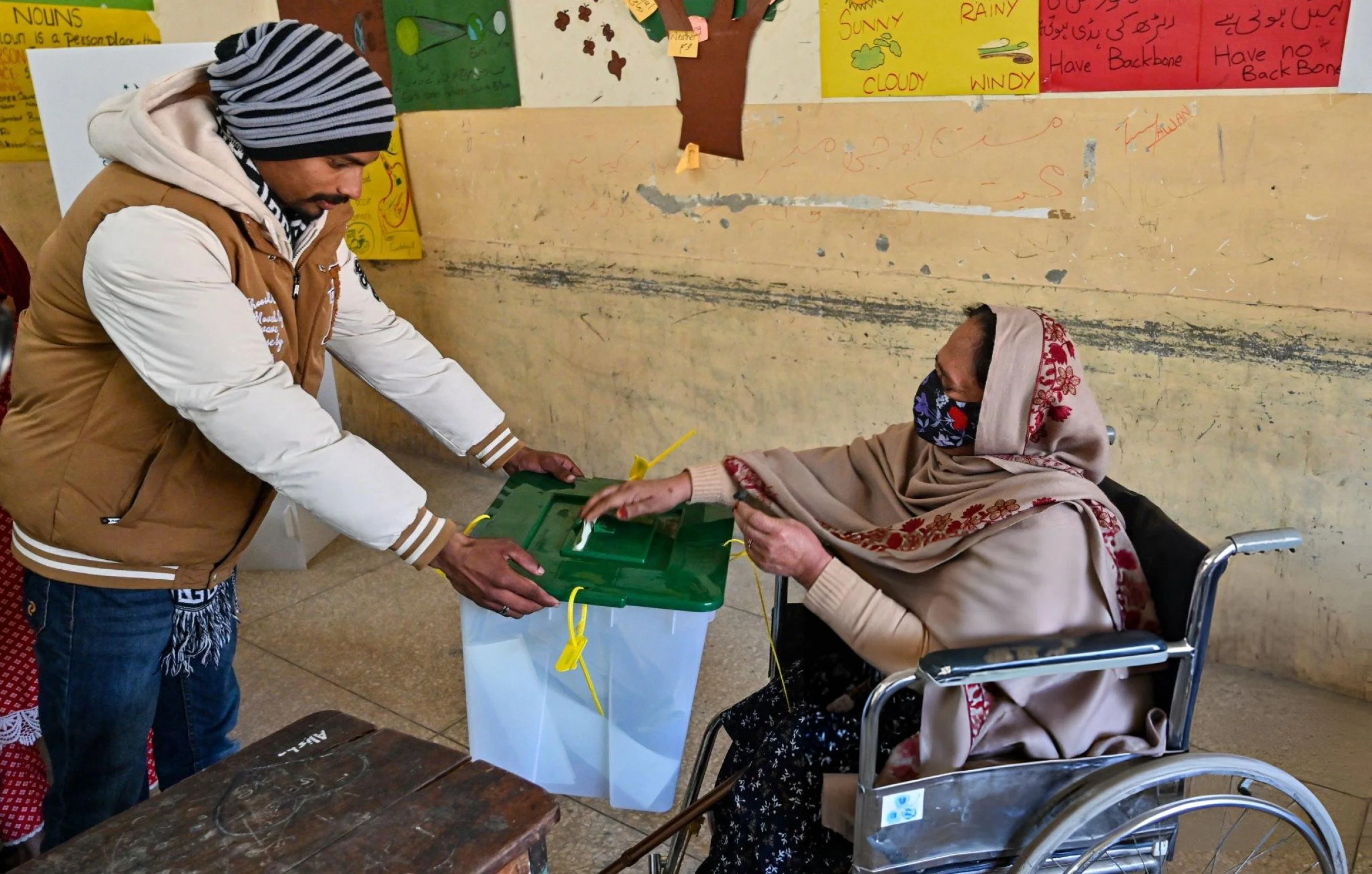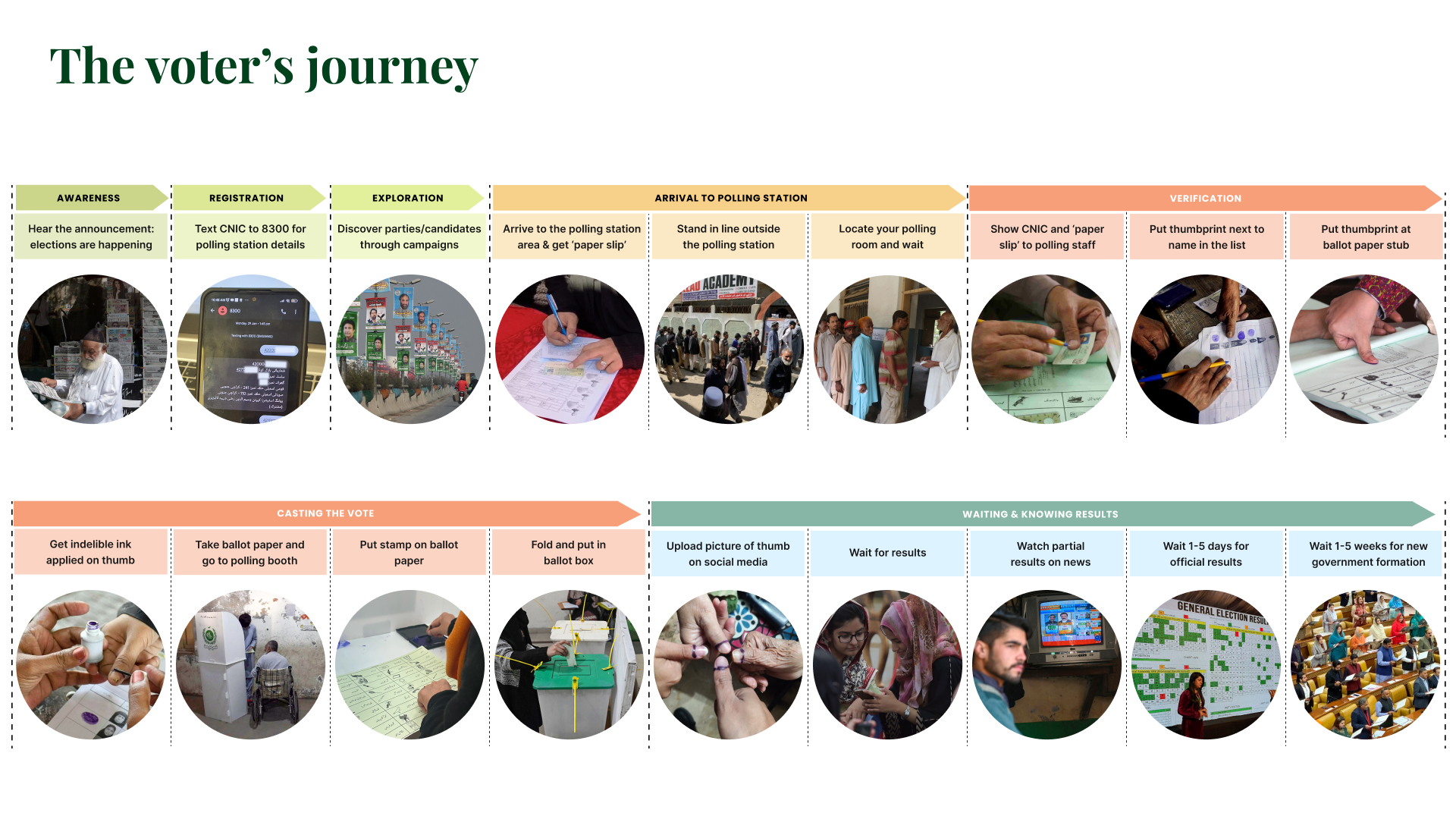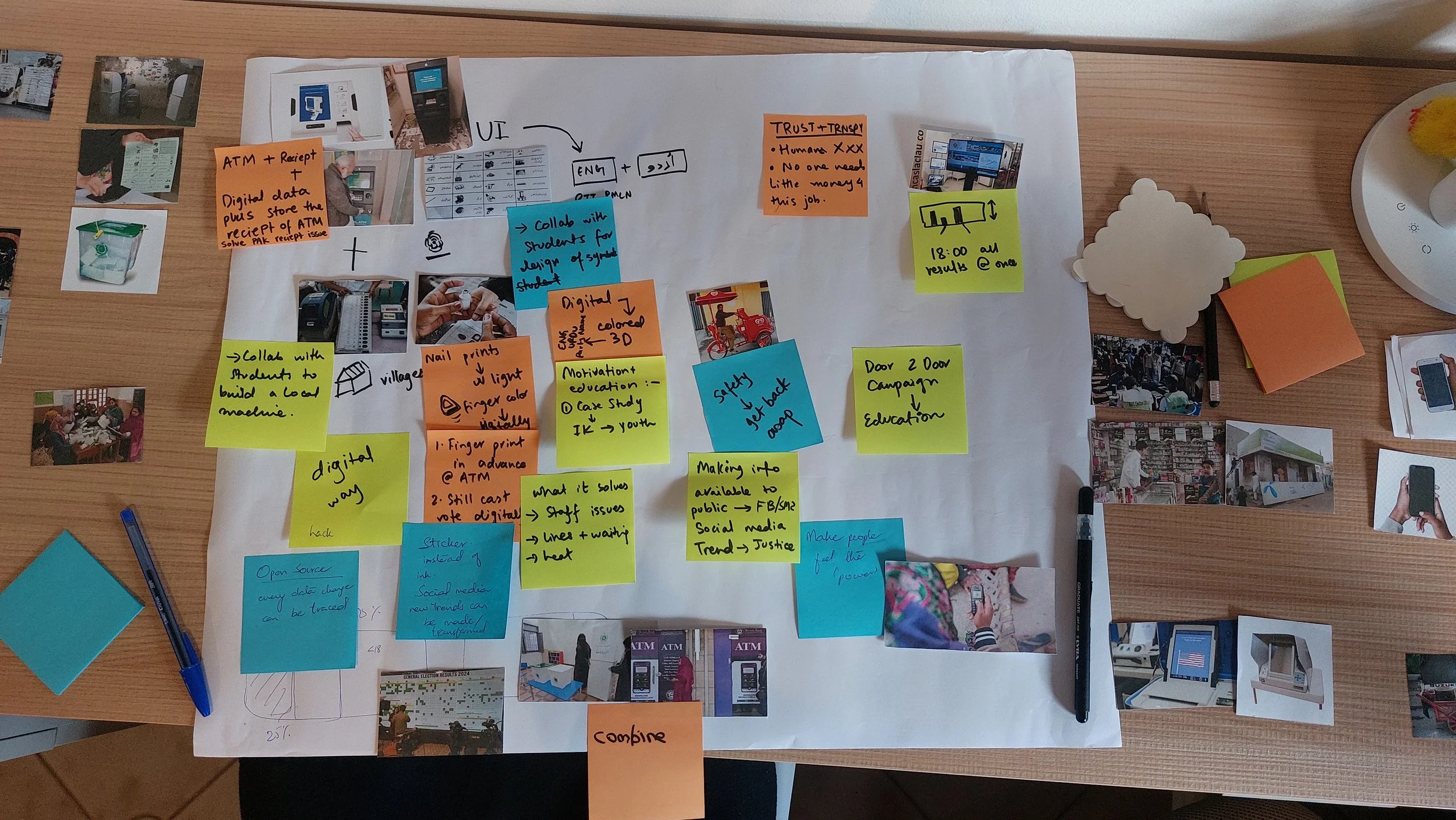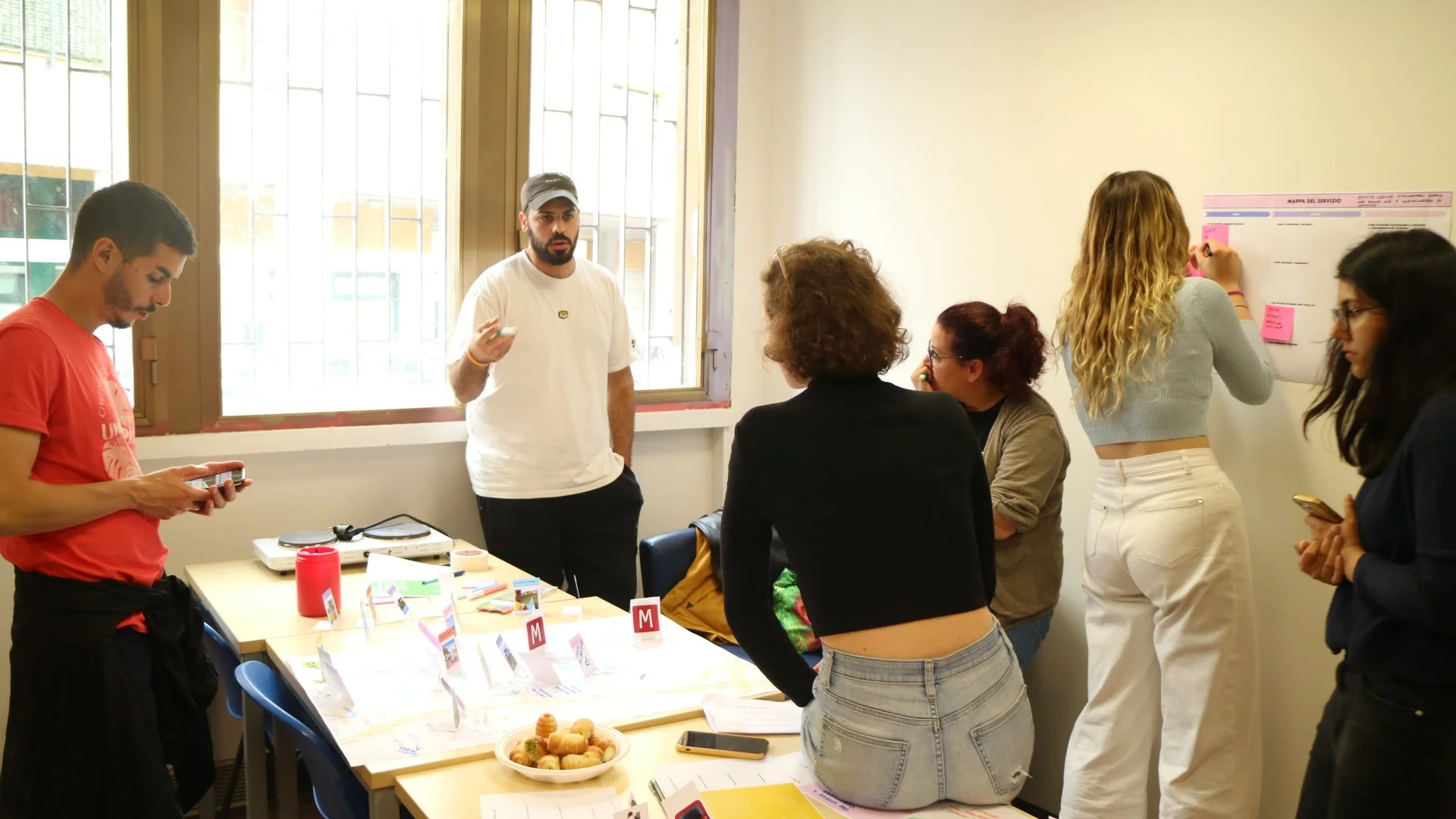A service design and systemic design inquiry into elections and voting
To vote or not to vote?
My role
Service designer, design researcher
Project type
Thesis project @Politecnico di Milano, 5 months (2024)
Team members
none
Design & research methods
Interviews, observations, co-design sessions, journey maps
Project
The electoral process is the backbone of democracy in any country. However, public administrators and policy-makers often design this critical service, resulting in complex, confusing, and inaccessible voting processes. The aim of this project was to analyse the voting process from a service design lens. The context of Pakistan was chosen for this research, where general elections were held in February 2024.
How can the application of service design and systemic design improve the electoral process in Pakistan?
Output
A report, booklet and presentation summarising the project were the main output. Various insights about the voting process in Pakistan were uncovered, including a myriad of problems at both micro and macro levels. The final proposed design interventions to improve elections in Pakistan include redesigning current steps & touchpoints in the voting process, introducing digital or e-voting systems and considering systemic issues such as literacy levels of the population which affect elections.
Impact
At the moment, I am in the process of publishing this research and also pitching it to the concerned departments in the Government of Pakistan for possible consultation and implementation.
Context
Pakistan, situated in South Asia, ranks as the world’s fifth most populous country, with an estimated population of 242 million. It is a very heterogenous population with diverse cultures and ethnicities and 70+ spoken languages.
Pakistan follows a ‘First-Past-The-Post (FPTP)’ electoral system. Elections are held every five years, granting voting eligibility to all individuals aged eighteen or above. A body called the Election Commission of Pakistan (ECP) oversees the electoral process in Pakistan.
WHO IS INVOLVED (Stakeholder map):
GENERAL ELECTIONS IN PAKISTAN 2024
On 8th February 2024, General elections were held in Pakistan. The budget for the elections in Pakistan in 2024 was PKR 47 billion (~169 million USD). There were 90,675 polling stations all over the country, with 17,816 candidates competing in the election (Khan, I.A., 2024b). Over 260 million ballot papers were printed for the election, distinguished by color, green for the National Assembly and white for the Provincial Assembly.
The total number of registered voters was 128.5 million, which is 53% of the total population. Once the elections were held and the votes calculated, the declared turnout was 60.6 million, which is 47.6% of registered voters, and 25.1% of the total population of Pakistan.


A mix methods approach was used for the research in this project:
A multifaceted literature review, including electoral terminologies, types of electoral systems in the world, Pakistan’s electoral context, and any existing literature on the relationship between communication design, UX design or service design with voting processes and elections
Analysis of news articles as many news articles covered the experience of voters and any hurdles that they faced on the election day
Analysis of social media posts and memes was many voters in the country expressed their positive, negative or funny experiences while casting their vote through memes and posts on social media
Interviews with voters from different cities to hear first hand experiences and observations during the elections
Interviews with journalists who visited polling stations, talked to multiple voters and then published their observations about the experience of voters on the election day
Research
LITERATURE REVIEW
Research Insights
General Insights:
Citizen’s enthusiasm to cast their vote
Citizens are very enthusiastic to cast their vote. They see it as more than just a duty. Voting is a deeply emotional activity, however the emotions can be negative or positive depending on the experience of the voters.
Sense of agency of people
The sense of agency of people has a strong connection with voting. Casting a vote makes people feel empowered, however, if there are too many hurdles, then they feel as if this sense of agency has been taken away from them.
Trust and hope
Trust also has a complex relationship with voting. Most people have a lack of trust in the transparency and credibility of elections, but at the same time, they cast their vote, as an act of hope and defiance.
Memes as a coping mechanism & activism
The thousands of memes produced about elections in Pakistan was reported as a way for citizens to reclaim their sense of agency by using humor to critique the voting and result counting process. The citizens were also able to raise their voice about the problems they faced while voting through memes.
There is an abundance of green and open spaces in the neighborhood which are not used to their full potential.
“The neighborhood is beautiful, we have parks and the Ponte bridge. Compared to the centre of Milan which is more crowded, we have a closer connection to nature. However, these spaces are often empty and unused. ”
- A resident
Empty green spaces in the neighborhood
Insights from Mosso:
Many residents and local businesses we interviewed in the neighborhood did not know about mosso at all. Those who did know mosso, knew it only as a bar and a pizzeria, and had no idea about the welfare services or other services that mosso provides.
Identity as a commercial place only
Danger of being a cathedral in the desert
According to different research participants and our observations (although not mentioned by mosso representatives themselves), there is a danger of mosso being "a cathedral in the desert". This means that since mosso is a relatively new entity (1.5 years old), it needs to slowly integrate itself better into its surroundings, in order to not become completely isolated and distanced from its context.
Vision of serving the community & engaging the neighborhood
Luca and Samantha (the managers and representatives of mosso) described how mosso exists to engage and empower everyone in the neighborhood. The aim is to cater to the entire neighborhood, including those who are often neglected, marginalized, or without housing privileges.
Vision of serving the community & engaging the neighborhood
Luca and Samantha (the managers and representatives of mosso) described how mosso exists to engage and empower everyone in the neighborhood. The aim is to cater to the entire neighborhood, including those who are often neglected, marginalized, or without housing privileges.
Interested in knowing all the research insights in detail?
The abandoned Renzo Piano project in the area
Research Insights
General Insights:
Citizen’s enthusiasm to cast their vote
Citizens are very enthusiastic to cast their vote. They see it as more than just a duty. Voting is a deeply emotional activity, however the emotions can be negative or positive depending on the experience of the voters.
Sense of agency of people
The sense of agency of people has a strong connection with voting. Casting a vote makes people feel empowered, however, if there are too many hurdles, then they feel as if this sense of agency has been taken away from them.
Trust and hope
Trust also has a complex relationship with voting. Most people have a lack of trust in the transparency and credibility of elections, but at the same time, they cast their vote, as an act of hope and defiance.
Memes as a coping mechanism & activism
The thousands of memes produced about elections in Pakistan was reported as a way for citizens to reclaim their sense of agency by using humor to critique the voting and result counting process. The citizens were also able to raise their voice about the problems they faced while voting through memes.
“The neighborhood is beautiful, we have parks and the Ponte bridge. Compared to the centre of Milan which is more crowded, we have a closer connection to nature. However, these spaces are often empty and unused. ”
- A resident
What is working well in the elections
Many residents and local businesses we interviewed in the neighborhood did not know about mosso at all. Those who did know mosso, knew it only as a bar and a pizzeria, and had no idea about the welfare services or other services that mosso provides.
Identity as a commercial place only
Danger of being a cathedral in the desert
According to different research participants and our observations (although not mentioned by mosso representatives themselves), there is a danger of mosso being "a cathedral in the desert". This means that since mosso is a relatively new entity (1.5 years old), it needs to slowly integrate itself better into its surroundings, in order to not become completely isolated and distanced from its context.
Vision of serving the community & engaging the neighborhood
Luca and Samantha (the managers and representatives of mosso) described how mosso exists to engage and empower everyone in the neighborhood. The aim is to cater to the entire neighborhood, including those who are often neglected, marginalized, or without housing privileges.
The abandoned Renzo Piano project in the area


Co-design Sessions
In-person co-design sessions were held with two voters. The objective of the co-design activity was to discuss and imagine a redesigned voting process in Pakistan by choosing from current steps in the voting process, the pre-proposed solutions (e.g. electronic voting machines) and or other new steps or touchpoints. Overall, the new journeys that were built were very different from the current journey of a voter in Pakistan’s elections.
The main boundary objects used were pictures of the current steps of voting for the elections in Pakistan, as well as pictures of proposed new solutions such as electronic voting machines, ATM machines, digital wallet shops across the country, TV screens, kiosks etc.
Participant 01 mentioned that she preferred the idea of a locally designed electronic voting machine. Having worked in a bank herself before, she mentioned that using ATMs for voting could prove to be tricky because ATMs are owned mostly by private banks. She insisted that the application of indelible ink on the thumb is an important step and should be retained even if the rest of the service is changed and/or automated. She also mentioned how the purple color of the ink has strong connotations as it is the color of knowledge and power.
Participant 02 said that for her, the idea of using existing ATM machines and related infrastructure stood out the most.
She said that humans need to be removed from the process as much as possible, because manual processes can have human errors and/or deliberate tampering. Her proposed ideas also solve the problems of long lines and long waiting times as voting with the ATM can be really fast and efficient. The results can be shared on time with everyone and the chances of the results being rigged are also reduced significantly.


Research Output
The different layers and types of design and their connection with the elections in Pakistan
DESIGN INTERVENTIONS:
1. REDESIGNING EXISTING STEPS AND TOUCHPOINTS IN THE VOTING PROCESS:
2. COMPLETELY REDESIGNING THE SERVICE:
2A. Electronic Voting Machine (EVM)
The Government of Pakistan can introduce battery powered EVMs. In each polling room, multiple EVMs can be placed so that voting can take place faster. The machine has biometric and National ID Card verification so that each eligible citizen can vote only once. The EVM is also placed in a privacy booth.
Potential risks with the introduction of EVMs
The data from an EVM can still be hacked or manipulated. Multiple security tests will be needed to ensure that the data is hack-proof and tamper-proof.
The EVMs may seem intimidating to those who are not literate or tech-literate. In this case, similar to India, there can be digital and physical campaigns by ECP and political parties to familiarize the voters with the EVM.
In the long run, EVMs are cost effective than paper ballots. However, the machines will have an up-front cost as well as a maintenance cost.
2. COMPLETELY REDESIGNING THE SERVICE:
2B. ATM based Electronic Voting
ECP collaborates with the National Database and Registration Authority (NADRA), 1Link and all the private and public banks in Pakistan to use the ATM machines for elections. The elections are conducted in one or two days. People can vote at any ATM across the country, however they will only be shown options of the constituency where their vote is registered. The voter arrives at the ATM machine. The ATM machine booth has one polling staff member outside to assist the voters in any way if needed. The voter enters the small room where the ATM is placed. They use their ID card and biometric verification panel on the ATM to verify who they are. The UI of the ATM asks them to pick their preferred language.
Potential risks with the introduction of ATM based voting
In rural areas where the number of ATMs are lower and the distances between ATMs are also larger, there would need to be an alternate method of voting available.
This solution relies on the collaboration of private banks with the ECP and Government of Pakistan as most ATMs are owned by private banks.
EXPECTED IMPACT
Personal Reflections
What did I learn?
This was one of my first design projects in the context of Milan. I learnt:
How co-design can be an effective tool not only to understand the validity of concepts, but also to empower the involved stakeholders within the ideation, design and decision-making process
Service designers often have to go beyond the given brief and study in detail the context and root causes of a given problem
The value of a multi-cultural team & collaboration, since we were able to reduce the biases in our understanding and ideas by discussing and analysing as a team
Limitations of the project
There were a myriad of limitations in this project. Firstly, there was limited availability of the youth workers and the coordinator within the CAG, hence the research was not as detailed as we liked. Secondly, since we were working with minors, often we would only get to engage very few teenagers in our interviews/co-design, so we had to work with a limited sample size. Thirdly, the timelines of the course (within which we were doing this project) would not match the timelines and pace at which the CAG and the Municipality works. Hence the rushed pace of the course often affected the quality of the output.
What would I improve or change?
I would change the timeline of the project, so that more research sessions and co-design sessions can be held not only with the youth workers at the CAG but also with the parents and other community members of the neighborhood.














































